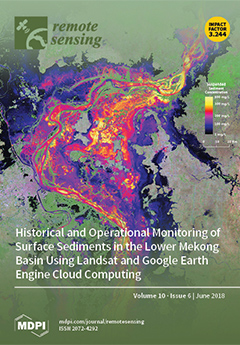Traditional NDVI-T
s space is triangular or trapezoidal, but Liu et al. (2015) discovered that the NDVI-T
s space was bi-parabolic when the study area was covered with low biomass vegetation. Moreover, the numerical value of the indicator was considered in most of the study when the drought conditions in the space domain were evaluated. In addition, quantitatively assessing the spatial-temporal changes of the drought was not enough. In this study, first, we used MODIS NDVI and T
s data to reexamine if the NDVI-T
s space with “time” and a single pixel domain is bi-parabolic in the Shaanxi province of China, which is vegetated with low biomass to high biomass. This is compared with the triangular NDVI-T
s space and one of the well-known drought indexes called the temperature-vegetation index (TVX). The results demonstrated that dry and wet edges exhibited a parabolic shape again in scatter plots of T
s and NDVI in the Shaanxi province, which was linear in the triangular NDVI-T
s space. The Temperature Vegetation Dryness Index (TVDI
c) was obtained from bi-parabolic NDVI-T
s andTVDI
t was obtained from the triangular NDVI-T
s space and TVX were compared with 10-cm depth relative soil moisture. By estimating the 10-cm depth soil moisture, TVDI
c was better than TVDI
t, which were all apparently better than TVX. Second, combined with MODIS data, the drought conditions of the study area were assessed by TVDI
c between 2000 to 2016. Spatially, the drought in the Shaanxi Province between 2000 to 2016 were mainly distributed in the northwest, North Shaanxi, and the North and East Guanzhong plain. The drought area of the Shaanxi province accounted for 31.95% in 2000 and 27.65% in 2016, respectively. Third, we quantitatively evaluated the variation of the drought status by using Gradient-based Structural Similarity (GSSIM) methods. The area of the drought conditions significantly changed and moderately changed at 5.34% and 40.22%, respectively, between 2000 and 2016. Finally, the possible reasons for drought change were discussed. The change of precipitation, temperature, irrigation, destruction or betterment of vegetation, and the enlargement of opening mining, etc., can lead to the variations of drought.
Full article





